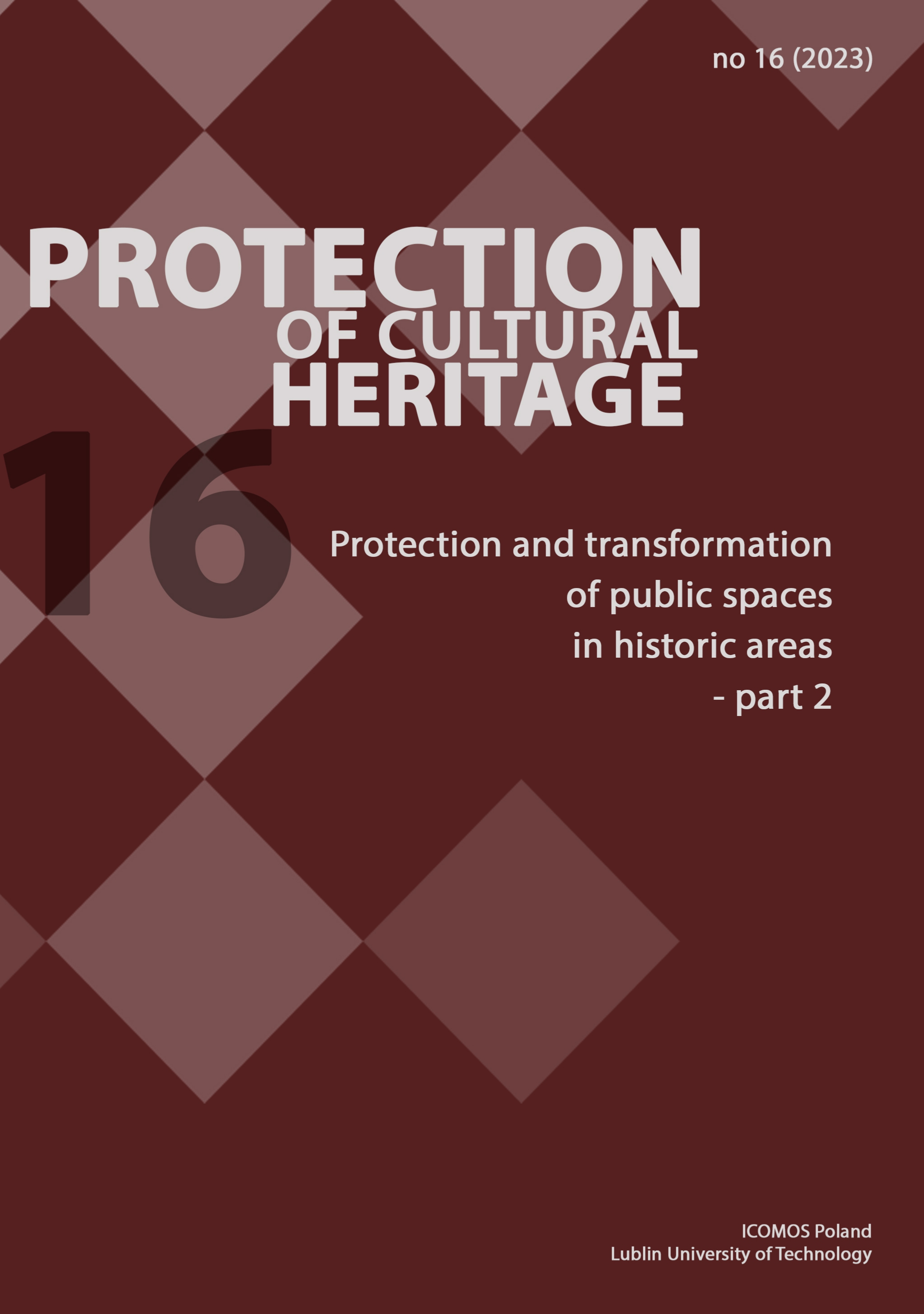From Beneficiation Haciendas to Heritage Public Spaces in the City of Guanajuato. Plaza de los Ángeles Case
Article Sidebar
Open full text
Issue No. 16 (2023)
-
Contemporary revitalization of public spaces in Łódź. The role of squares, streets and courtyards in creating the genius loci based on the historical heritage
Łukasz Mikołaj Sadowski, Aleksandra Sumorok7-20
-
Towards a nature-culture relationship in historic centres. Evidence of public spaces beyond tourism in Florence (Italy)
Corinna Del Bianco21-34
-
From Beneficiation Haciendas to Heritage Public Spaces in the City of Guanajuato. Plaza de los Ángeles Case
Enya Cerca Cervantes, Velia Yolanda Ordaz Zubia35-43
-
Figure and ground: an English view of the conservation of historic public spaces
Nigel Walter45-58
-
Intangible values and touristification of public spaces in the ancient centre of Naples (Italy)
Rita Gagliardi59-71
-
The heart of public interventions in historic cities: reflections on the HRIDAY scheme
Swapna Kothari, Shivangi Thakur75-85
-
Courtyards of castles partially reconstructed in historic towns
Kamila Boguszewska, Katarzyna Drobek87-109
Main Article Content
DOI
Authors
Abstract
Some centuries ago, the city of Guanajuato was divided into neighborhoods in which a beneficiation hacienda was generally located. Various activities related to mining and metallurgical work were carried out, a predominant characteristic in the region such as quicksilver and the casting of metals. With the passage of time, these beneficiation haciendas were subdivided, the families of the workers remained on the farms adjacent to the big house (where the owner of the quicksilver or head of the smelter lived), and gave up their place to heritage public spaces which are visited and admired today by the tourism sector. In some cases, the land use changed, and in others it continues to be the predominant use in the area. Another no less important factor is the observable state of conservation, because, although there are few buildings whose infrastructure does not receive the attention they should, it does not affect the popularity enjoyed by the space in question.
Keywords:
References
Althabe, G. (1984). Hacia una antropología del presente En: Terrain. Carnets du Patrimoine Ethnologique, núm 3. Mission Patrimoine ethnologique, París.
Andrade, M. (2023). Entrevista. Historia de la Plaza de los Ángeles Licenciada en Historia por la Universidad de Guanajuato. Maestra en Historia del Arte por la Universidad Nacional Autónoma de México. Guanajuato, Gto.
Arendt, H. (1958). La Condición Humana Círculo de Lectores, Barcelona.
Barajas, R. (1981). Tesis Profesional: Consideraciones para la Reglamentación de la Construcción en la Ciudad de Guanajuato; 450 Ańos de Historia Constructiva Universidad de Guanajuato. Facultad de Arquitectura.
Borja, Muxi J. & Z., (2003). El Espacio Público: Ciudad y Ciudadanía. Barcelona: Electa.
Lara, A. (2001). Haciendas de Beneficio en Guanajuato: Tecnología y usos de suelo Guanajuato, México: Presidencia Municipal de Guanajuato.
Lara, J.L. (1999). Historias urbanas de la ciudad de Guanajuato Ciudad de México. Ed. Presidencia Municipal de Guanajuato; Casa de la Cultura.
Marmolejo, L. (1967). Efemérides Guanajuatenses Tomo 1, UG.
Prado, A. (1990). Guanajuato: Callejones, calles, plazas y plazuelas. Carrasquilla Editores, S.A. de C.V. Irapuato, Gto. 90 p.
Puy A., M. J.; Ordaz Zubia, V.; Castro Macedo, F.. (2013). Haciendas de beneficio del sigloXVII y XVIII en el Distrito Minero de Guanajuato, Gto Editorial académica española.
Varela, A. (2001). Conservación de la Vivienda como Patrimonio Arquitectónico y Satisfactor Habitacional en los Centros Históricos Patrimonio Cultural.
Reglamento de Zonificación, uso y destino del suelo del municipio de Guanajuato, Gto. (2006), http://www.guanajuatocapital.gob.mx/files/201311/Reglamento%20de%20Zonificacion%2C%20Uso%20y%20Destino%20del%20Suelo.pdf.
Article Details
Abstract views: 150
License

This work is licensed under a Creative Commons Attribution-ShareAlike 4.0 International License.






